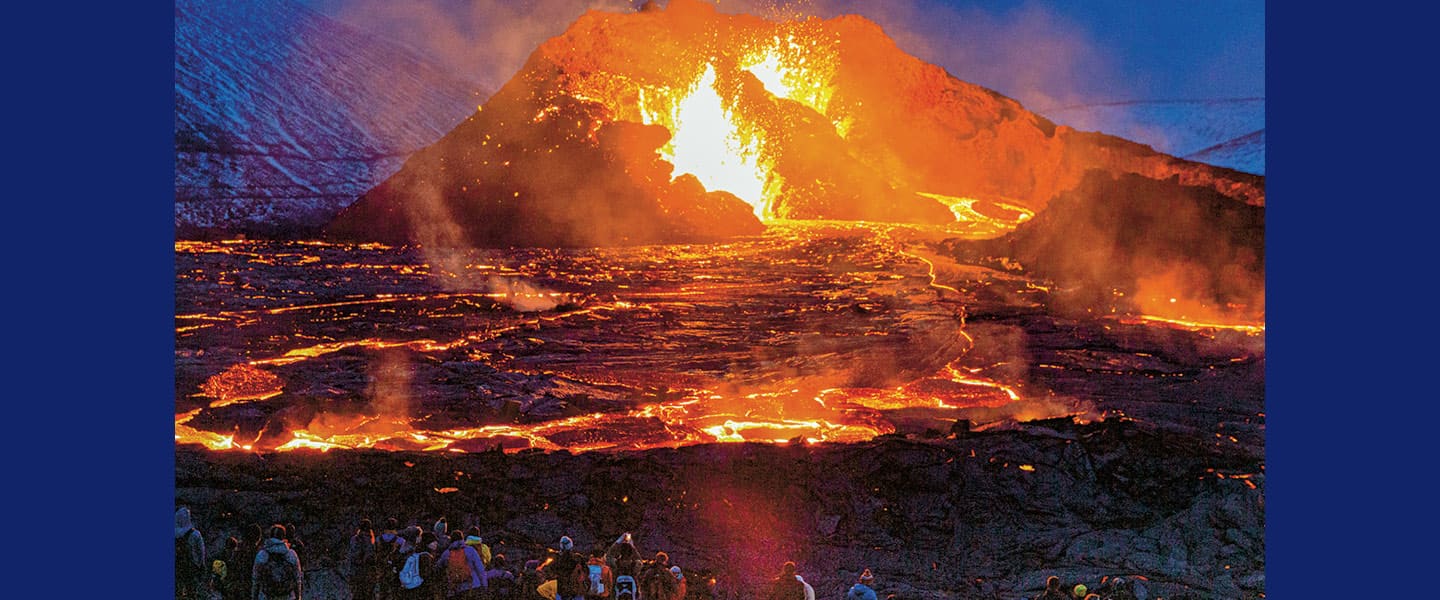Jim McMahon
Volcanoes can lie dormant for hundreds of years. Then suddenly, as the plates of Earth’s crust move, they might perk up again, spilling lava (molten rock from deep inside Earth’s crust) that can reach temperatures of roughly 2,000 degrees Fahrenheit. That’s what happened in Iceland in March when Mount Fagradalsfjall erupted.
First, 55,000 earthquakes, most of them tiny, shook the area in the three weeks leading up to the eruption, giving seismologists a clue that something was up. Then, on March 19, the volcano—which is about 20 miles from the capital, Reykjavík—began spewing lava for the first time in 800 years. It was a small eruption, but still “quite a big deal,” according to Elísabet Pálmadóttir, a natural hazard specialist at the Icelandic Meteorological Office. Although it happened close to where the majority of the country’s 361,000 residents live, no injuries were reported. People were excited and curious, some visiting in person to admire the lava and blood orange sky. (The lava was moving slowly, but authorities still urged caution.) Scientists are now preparing for what could be decades of increased activity: They have observed that after Iceland’s volcanoes become active again, eruptions can occur for up to 200 years. “It will certainly help us better understand volcanoes,” Pálmadóttir says. “We learn more and more with every eruption.”

